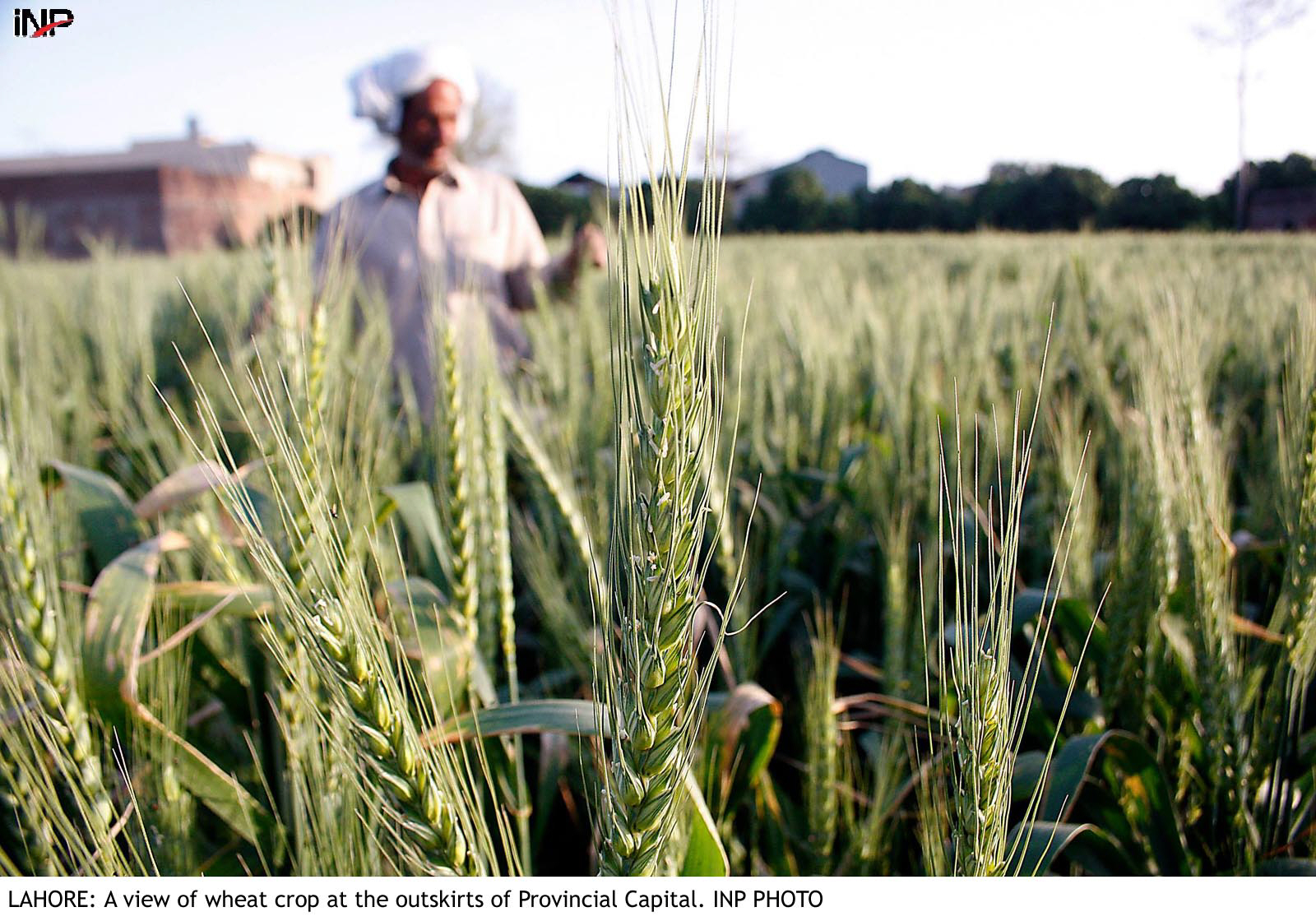
These views were shared with The Express Tribune by Agriculture PhD scholar Babar Baloch Latif, who insists that climate smart agriculture was the ultimate solution to stave off future threats.
He claimed that in 50 years, global agricultural output will need to surpass anything in known history with little or no increase in available resources including water. By 2030, he added, the need for food would be 50 per cent higher than what is being produced today.
Latif further explained that in 1961, the world`s agriculture sector had to feed 3.5 billion people using 1.37 billion hectares of land. Since then, the world population has doubled, while crop area has only increased by 12 per cent.
Water, on the other hand, will be another matter of grave concern. Agriculture utilises approximately 70 per cent of the world’s fresh water and will need 17 per cent more by 2020 to produce adequate food supplies. Currently, only 17 per cent of land on earth is usable, contributing nearly 40 per cent of total agricultural output, he said.
Inadequate, old fashioned and traditional methods of food handling causes more than 30 per cent of food to be lost before reaching consumers and forces many to sleep hungry every night. In addition, climate change is forcing shifts in the agricultural development agenda across the globe. Changes in temperature and precipitation and the rising frequency of extreme climatic events are projected to significantly reduce global food production during the current century, he said.
Putting forward a solution, Latif said that Climate Smart Agriculture is an integrated approach to achieving food security in the face of climate change. “But as a matter of fact, it is yet, just a concept and needs much elaboration and demonstration especially for developing economies including Pakistan,” he said.
He stated that climate smart agriculture (CSA) needs support of research and development organisations, policy and decision makers, national and international financers and dedicated knowledge and experience worthy human resources for long term sustainability of agriculture.
A warm welcome to CSA may result in sustainable increase in agriculture productivity, resilience and capacity building of agriculture and food sectors in making them more adaptive towards climate changes and reduction in greenhouse gases and global food insecurity. CSA confronts on three dimensional approaches to achieve the objectives of sustainable food production and eliminating climatic threats gradually, he remarked.
CSA tries to bring together farmers, scientist, policy-makers and other stakeholders to identify, refine, disseminate and implement fruitful actions to make a considerable difference, he explained. Along with this, climate research has mapped changing temperatures, precipitation and the higher risk of extreme events. However, effects are expected to vary substantially across even relatively small regions. Thus, the design of changes in crop varieties and crop mix, infrastructure investments and policies must be individualised.
Expressing his views on CSA Pir Mehr Ali Shah Arid Agriculture University (PMAS-AAU) Vice Chancellor Dr Rai Niaz said CSA is a continuous and iterative process of planning, implementation, monitoring, evaluation continuous learning, knowledge sharing, and advancement towards sustainable solutions. “Agricultural production is directly linked with complex food chains and requires many stakeholders to participate in solving the daunting problems of agriculture, food insecurity and climate change simultaneously,” he said.
Published in The Express Tribune, November 8th, 2014.
COMMENTS (1)
Comments are moderated and generally will be posted if they are on-topic and not abusive.
For more information, please see our Comments FAQ

















Save taxpayer's money AND defund climate change and environmental destruction by ending the enormous subsidies and tax breaks for animal agriculture!
With 60+ BILLION food animals on the planet our best chance to mitigate climate change is to severely reduce consumption of animal foods. More than 1/3 of human induced warming is attributable to animal agriculture. Methane is 24 times more potent than CO2 but takes only 7 years to cycle out of the atmosphere. CO2 takes around 100 years to come out. Human pursuit of animal protein is the leading cause of methane release and a primary cause of CO2 concentrating in the atmosphere. Check the facts and act!
"As environmental science has advanced, it has become apparent that the human appetite for animal flesh is a driving force behind virtually every major category of environmental damage now threatening the human future: deforestation, erosion, fresh water scarcity, air and water pollution, climate change, biodiversity loss, social injustice, the destabilization of communities, and the spread of disease." Worldwatch Institute, "Is Meat Sustainable?"
“If every American skipped one meal of chicken per week and substituted vegetables and grains... the carbon dioxide savings would be the same as taking more than half a million cars off of U.S. roads.” Environmental Defense Fund
"A 1% reduction in world-wide meat intake has the same benefit as a three trillion-dollar investment in solar energy." ~ Chris Mentzel, CEO of Clean Energy
There is one single industry destroying the planet more than any other. But no one wants to talk about it... http://cowspiracy.com
Step by Step Guide: How to Transition to a Vegan Diet http://www.onegreenplanet.org/vegan-food/step-by-step-guide-how-to-transition-to-vegan-diet/